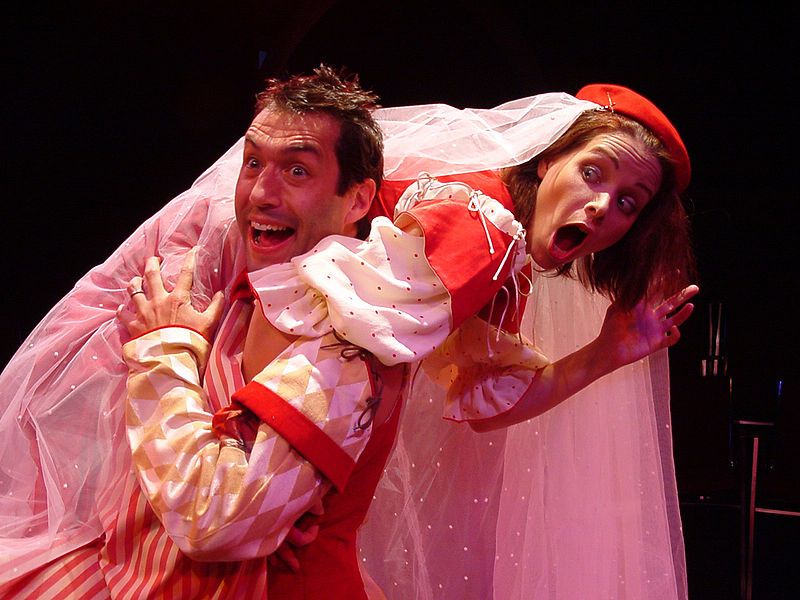Key Differences – Farce vs Comedy
Comedy is a type of dramatic work that elicits laughter. Some comedies are meant solely to make people laugh, while others aim to criticize societal vices and follies while creating laughter. Farce, on the other hand, is a subtype of comedy characterized by highly exaggerated and comical situations and crude, one-dimensional characterizations. The primary goal of a farce is to make the audience laugh, without any other objectives.
What is a Farce?
A farce is considered a lower form of comedy. It can be described as a comic dramatic work that employs buffoonery and horseplay, and typically includes crude characterizations and ludicrously improbable situations. As this definition suggests, a farce involves exaggerated and amusing situations and one-dimensional characters. The plot of a farce may often feature numerous twists and random events, such as mistaken identities and misunderstandings. This type of comedy relies on purposeful absurdity, physical humor, bawdy jokes, and so on to evoke laughter. The primary objective of a farce is to entertain the audience and make them laugh.
Some examples of farces in film include “Home Alone,” “The Three Stooges,” and “The Hangover.” Farcical plays include William Shakespeare’s “Comedy of Errors” and “Taming of the Shrew,” Joe Orton’s “What the Butler Saw,” Michael Frayn’s “Noises Off,” and Marc Camoletti’s “Boeing-Boeing.”
What is a Comedy?
A comedy is a dramatic work that is light, often humorous, and usually features a happy ending. Essentially, a comedy is a dramatic work designed to make its audience laugh. There are two primary types of comedy, classified as high and low comedy.
High comedy is characterized by subtle characterizations, witty dialogue, irony, and satire. It is sophisticated in nature and focuses on the inconsistencies and incongruities of human nature. The goal of this type of comedy is not just to entertain the audience but also to serve as social criticism. Examples of high comedy include satire and comedy of manners, as well as literary works such as Alexander Pope’s “The Rape of Lock,” and Oscar Wilde’s “The Importance of Being Earnest” and “Lady Windermere’s Fan.”
Low comedy, on the other hand, is characterized by humorous or farcical situations, absurdities, physical action, and often bawdy or vulgar jokes. It is not serious in nature and does not appeal to the intellect. This type of comedy’s sole purpose is to entertain the audience, with no higher objectives. Examples of low comedy include farce, parody, and burlesque.
What is the difference between Farce and Comedy?
Definition:
– Farce is a lighthearted comedy typically featuring crude characterizations and ludicrously improbable situations.
– Comedy is a dramatic work that is light and often humorous, usually containing a happy ending.
Type of Comedy:
– Farce is a type of low comedy.
– Comedy can be classified as high comedy and low comedy.
Aim:
– Farce aims to make the audience laugh.
– Comedy may expose vices and follies of society while creating laughter.
Techniques:
– Farce uses absurdities, vulgar jokes, and physical actions to create laughter.
– Comedy can use wit, satire, irony, slapstick, and farce to create laughter.
